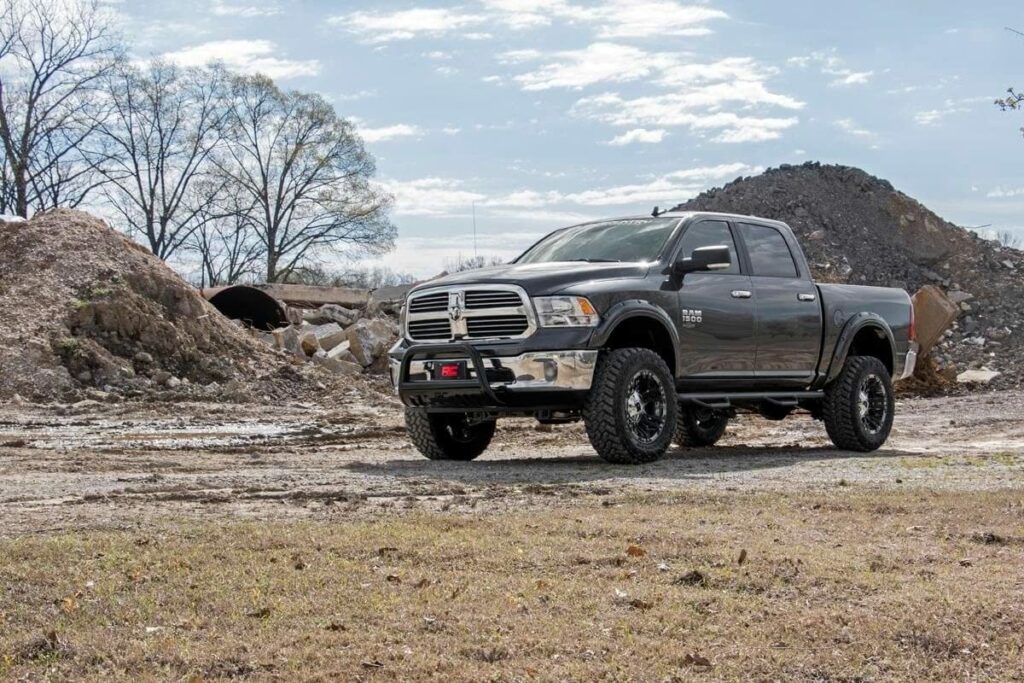4-inch Lift Vs. 6-inch Lift – What You Should Know
Are you considering lifting your truck and wondering whether you should use a 4-inch lift or a 6-inch one? There are a surprisingly large number of differences between these two suspension lifts.
From how they affect drivability to pricing, there is much to consider when choosing lifts for your vehicle. Here is what you should know about 4-inch lifts vs. 6-inch lifts.
Recommended reading: 4-inch lift kit before and after comparison
Price
Raising suspension up to 5 inches is considered a low-scale lift. With a 4-inch lift, the installation is hassle-free, which means it costs less. If you’re doing the work yourself, you’ll only need to pay for the lift kit, which you can get for as little as $400.
Installation of a 4-inch lift by a professional can cost up to $12,000. However, this is still less than the $15,000 you will pay for installing a 6-inch lift.
Even if you install the 6-inch lift yourself, you’ll still be out at least $1,200. Not to mention the costs of the tires and anything else you may need to modify your truck due to the raised suspension.
If you’re traveling off-road or carrying heavy loads regularly, investing in higher suspension can help you prevent suspension damages, so the cost is worth it.
Tire Compatibility
Most 4-inch lifts are compatible with 34-inch tires, but some work with 35-inch tires. However, bigger tires can interfere with the drivability of your truck.
6-inch lifts work best with 36-inch or 37-inch tires. With this combination, you’ll get the best ride quality.
The downside of having bigger tires and the extra 2 inches is that you’ll lose on the mileage you get from your tires.
Lifting Capacity
Raising your suspension with a 6-inch lift means your truck will become at least 6-inches higher. Depending on the type of suspension and tires you have, it can be lifted to 8 inches. With larger tires, your lift will be higher too.
With higher lifting, you’ll also need to consider access. For people on the shorter side, getting into a truck up to 8 inches higher than a regular vehicle is more challenging.
You might need to install steps to avoid the need to climb, which can be dangerous, especially in bad weather or rough terrain.
4-inch lifts won’t cause a drastic difference in suspension height. They also won’t require you to get larger tires than you normally use or steps for easier access into the cab. Your suspension will only be lifted by whatever capacity the lifts have.
Drivability
Higher suspensions lift the vehicle’s center of gravity. This changes the vehicle’s performance, and you might need to drive and turn slower and get used to driving a much taller vehicle.
4-inch lifts provide optimal drivability for regular on-road use. Most vehicle manufacturers recommend using a 4-inch lift only in ground conditions where you have optimal drivability.
If you’re using your vehicle for regular off-road trips, a 4-inch suspension lift might not be enough for maneuvering effectively over rocky terrain.
Combined with larger tires, 6-inch lifts provide more comfort on uneven ground. You won’t feel the impacts, and the vehicle will be easier to maneuver.
However, with 6-inch lifts, you might have an issue when you get back on the highway. The added height can make driving your vehicle uncomfortable at higher speeds.
If you need help determining which option is right, start with the lower lift. As you get used to maneuvering it, you’ll know if it’s enough for the terrain you’re driving on.
Fuel Consumption And Mileage
The higher your suspension is set, the more power your truck needs for steering, especially if the terrain demands aggressive driving. This also means increased fuel consumption.
With 6-inch lifts, you can expect your fuel consumption to increase and your ideal mileage to decrease. Depending on use, terrain, and load, your vehicle’s fuel consumption can increase up to 35%.
To compensate for the 6-inch lifts, you should get your speedometer recalibrated. This won’t be an issue with 4-inch lifts, which allow for more economical fuel use.
The type of terrain you use the vehicle on also affects fuel consumption. Off-road use requires more fuel. However, because larger tires and higher suspension make it easier to drive, installing 6-inch lifts can offset fuel consumption.
Space
Larger tires and elevated suspension require more space in your garage. If you have enough room to accommodate this, go for the 6-inch lift.
Garage door heights can vary from 84 inches to 108 inches. A truck can be as high as 77 inches without a suspension lift. If your garage’s door is on the lower end, lifting your vehicle 6-inches or more will make it impossible for you to drive it into the garage.
If you have a tiny garage that barely accommodates your vehicle, 4-inch lifts will be a more sensible option. Otherwise, you might need to invest in garage renovations.
While the latter can be costly, it is still a good solution if you’re using your vehicle on terrain requiring a higher suspension lift.
Aesthetics

Having a higher truck adds to its coolness factor. Due to larger tires and suspension gaps, 6-inch lifts are often more noticeable than 4-inch lifts. However, the bulkier tires you’ll need can take away from the visual appeal (or add to it if you like that aesthetic)!
Laws And Regulations
Different countries and states have different laws regulating suspension lifts. In some areas, 6-inch lifts are illegal, and you’ll be only allowed to lift your suspension to 5 inches.
There is less chance you’ll run into this issue with 4-inches, but check your local and state laws before installing any suspension lifts.
Final Thoughts
6-inch lifts cost more than 4-inch ones, even if you plan to install them yourself. The higher your truck is, the more challenging it is to maneuver.
To ensure your truck’s drivability is unaffected, you might need to install larger tires, which will lift your vehicle even more.
Depending on how much space you have in your garage, you will have difficulty accommodating a higher truck with larger tires. All these factors can further add to your expenses. Make sure you consider them before opting for either lift option.




